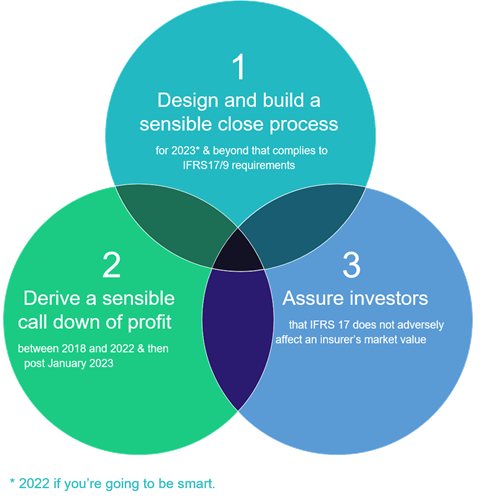IFRS 17 implementation objectives
We believe that there are just three objectives for IFRS 17/9 delivery projects. If IFRS 17 isn’t planned for the whole business, then insurers will wind up in trouble.
Actuaries and accountants have been looking at the standard since the first drafts of IFRS 4 Phase II emerged. Innovation has been working on and sharing its project delivery perspective since 2014 with project delivery plans made available to all insurers.
We have noticed that most focus at most insurers has been on how to interpret the standard, not on how to deliver an operational business process or assure investors.
Now is the time to remind ourselves IFRS 17/9 is about: preparing an operational close process that works for each insurer; work how out to deal with realising profit on either side of the 2023 change; and keep investors happy. That makes just three delivery objectives:
79 months is a long time for a delivery project with just three objectives. However, if insurers are to avoid large costs in delivering comparative accounts, they should have their standards, models and process agreed 24 months earlier by 1 January 2021. In addition, profit smoothing will be required, the later CSM is agreed, the bumpier the profit profiles. On top of this, insurers will have to live with the resulting IFRS 17/9 operational close process for a decade or more.
IFRS 17/9 means there will be a huge amount of technical work across different disciplines in each insurer. The interactions between disciplines needs to be well managed or projects will drift.
Mechanisms need to be in place to anticipate and manage the contradictions, challenges and obstacles that will be found along the way. Key to this is to give the project enough structure to ensure delivery takes place on time, but no so structured as to become bogged down in bureaucracy.









